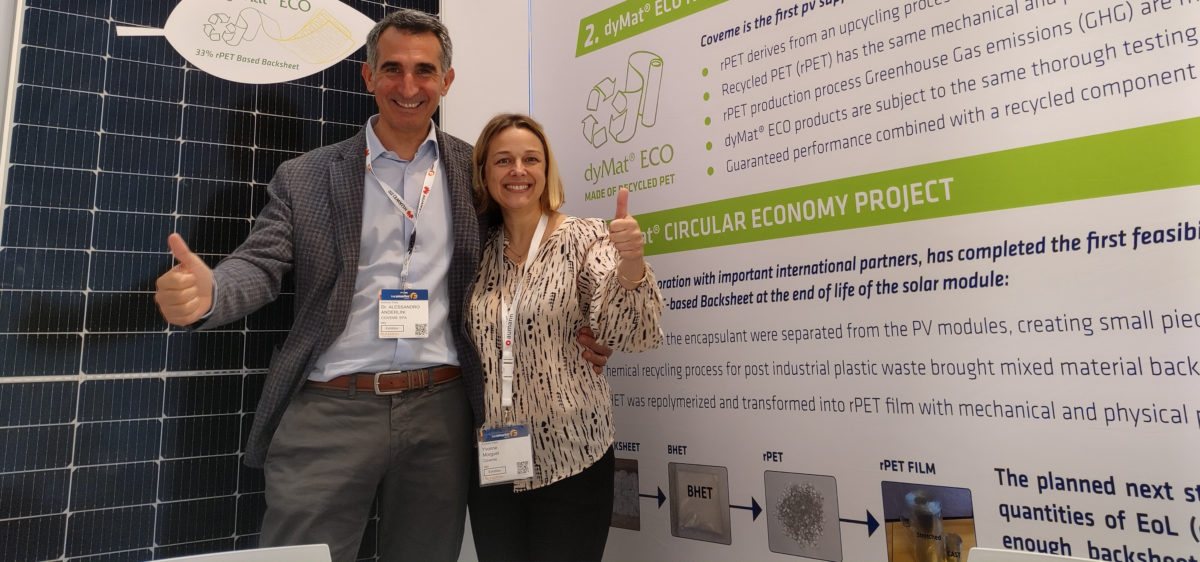
Growing ballast
Many a real estate owner is torn: Should they promote biodiversity and green his roof against the warming of inner cities, or should they rather generate as much electricity as possible to combat climate change? Contec customers can do both. The company offers a substructure in the form of a plastic tub. In the tub, the plants grow on a substrate layer that can store 40 to 90 liters of water at the same time.
The tub is shaped in such a way that an aluminum stand is integrated into it, on which various PV modules can be mounted. The tub functions as ballast against wind loads. The lower edges of the modules are always at least 20 cm from the ground to allow plants to grow. Some cities in Germany require greening of new buildings. This now no longer excludes photovoltaics.

Neptune, God of PV vs. the polar bear
Against the backdrop of a giant polar bear posing for photos, AE Solar unveiled its new PV-thermal hybrid solar module for generating both electricity and warm water.
The Neptune module series boasts efficiencies of between 20.31 and 20.86%, a power output of up to 380 W, and a thermal power rating of 964 W; and is kitted out with mono crystalline half cut solar cells. It is being produced this year in “very limited” capacities, but the company plans to develop capacities further in the coming years, Hamed Hanifi, Head of Development, told pv magazine.
Also on display were the German solar manufacturer’s patented shade resistant PV modules – the efficiency of which were demonstrated by Hanifi, a cardboard strip, spotlights, and a rather fetching water feature; and its Aurora module series which boasts power ratings of up to 670 W and efficiencies of up to 21.4%.
It’s HJT bifacial half cut cell, double glass PV module, the Comet, was another feature. While it launched last year, we are reportedly the first media outlet to get the lowdown on the details; namely: a power output of 460-480 W, efficiencies of up to 22.10%, and a “very low” temperature coefficient of 0.26% thus making it ideal for extreme climates. It also comprises POE encapsulation and measures 2,215 mm x 1,135 mm x 2,230 mm.
Global ambitions for solar sustainability
The second half of 2022 is going to see Trina Solar focusing more on sustainability. In addition to participating in our upcoming roundtable session on the topic, the Chinese manufacturer has joined several initiatives, like 1.5 degrees, and is a founding member of the Global Alliance for Sustainable Energy. The alliance aims to bring all types of renewable energy companies together to define and roll out best practices and standards for pushing the energy transition further.
In house, the company has dedicated a large team to look at issues like PV module recycling, sustainable design, materials, and packaging. Trina is also gearing up to publish its first ESG report soon. Watch out for more details at the pv magazine Roundtables this June.

Solar manufacturing outside China continues to be dogged by uncertainty
There are numerous plans for solar cell and module manufacturing operations to be established or expanded outside China but many are delayed by the current uncertain business climate, not least in promising European and North American markets.
Italian solar panel backsheet producer Coveme works closely with module makers and is all too aware of the progress being made – or not, as the case may be.
Coveme’s Michele Vannini and Alessandro Anderlini, present at Intersolar, noted how a combination of Covid-19 and war in Ukraine have made diversifying Europe's energy supply imperative – whether that be to avoid dependence on Russian gas or Chinese solar modules.
The pair reported confusion over what sort of support solar manufacturers might receive from policymakers in Europe and North America.
Coveme is a partner in pv magazine‘s UP Initiative. The company aims to foster sustainable practices within the solar industry and has plans to invest in new production lines for front and backsheets next year, in Italy, that would employ solvent-free and special coating technologies with a low environmental impact.
Given sufficient demand, the new backsheet production line in Italy will be capable of producing enough product for around 4 GW to 5 GW of solar modules, Anderlini said.

Did someone say 'freebie'?
Established German engineering, procurement, and construction services provider Pfalzsolar has some top-rated show goodies on offer in this year's fierce swag stakes.
Our own Marian Willuhn was delighted to show off his newly acquired Eat, Sleep, Solar, Repeat sweater.
And you know our Marian's motto: “If it's free, I'll have two please.”
(#Welovesolar too, it's just that most of us don't have an attractive coral jumper to go with the statement…)
Mandate is not on the cards at this stage
With a leaked paper about the European Commission's planned solar strategy doing the rounds, MEP Michael Bloss has just said the document due out in a week's time does not contain a proposal for mandatory solar on all new EU buildings, Beatriz Santos reports.
The German politician did, however, signal to Jacek Truszczynski, of the commission's directorate general for economic and financial affairs, that the document could still be amended in the next few days.
The commissioner refused to comment on the issue.
This just in from Marija...
Amid a heated debate about the battery technologies that could prove game-changers, British sodium-ion specialist Faradion has just touted media interest in its tech and who are we to argue, as pv magazine‘s Marija Maisch observes proceedings!
Solar and EVs in tandem – right down to the cabling
Shoals Technologies, long a major player in the US large scale solar business, has found its “big lead assembly” technology, which aims to cut much of the complexity out of the wiring and electrical installation of solar plants, can also bring big benefits to EV charging infrastructure.
Keeping all wiring above ground in protective aluminum conduits, Shoals products can drastically speed installation.

New-wave floating PV
As emphasized by the small solar system floating on the artificial lake outside the conference center, floating solar (FPV) is a rapidly growing niche.
As Charles Gery, of Seaflex, said in the Solid foundations – what's needed for developing and building successful floating solar projects session, “FPV is moving rapidly.”
Of particular interest are opportunities for floating solar to combine in symbiotic relationships with other systems, such as hydroelectric dams.
Seaflex's elastic mooring lines, which can hold multiple attachment points, have most recently been employed in a partially EU-funded project with Portuguese utility EDP, a 5 MW floating solar system on the Alqueva reservoir which is the biggest FPV project on a European hydro dam.
“The point of the project was to reduce the LCOE [levelized cost of energy] of hydro dam projects so that there can be more,” said Gery, who added the cost reductions were achieved and Portugal has now ordered 180 MW of floating solar for its hydroelectric dams.
After the presentation, pv magazine‘s Blake Matich spoke with Ran Alcalay, chief executive of Israeli floating solar tracker company Xfloat, who described a 10 MW in-shore project that will be completed in August.
Alcalay said Xfloat's horizontal trackers provide yield increases of 15% to 20% and represent a new phase of LCOE reduction for floating solar.
“The second wave of FPV is coming,” said Alcalay.

Can you generate a spark cheaper than anyone else?
Are you a dab hand at plant design? Then here's a challenge for you.
There will be a competition at the RatedPower booth (460 in Hall A4). Whoever teases out the lowest electricity generation costs for a theoretical project will receive a prize.
While figuring out how to tamp down those expenses, you can get to know pvDesign, the software which, according to the company, can reduce project planning times and automate parts of the planning process such as the calculation of various system constellations.
If you are interested in finding out more about the software, you can try out the full license for 14 days and RatedPower released an improved user interface only last week, with more space for graphical planning.
Why not roll up at the stand and have a go? Staff are on hand who speak Spanish, Portuguese, German, English, French, and Chinese. Or you can have a gander at a RatedPower webinar to see how the software works, like this one hosted by pv magazine last year.
Alternatively, there is a German language seminar we are planning for June 8 and you can register for that here.
Water draining device for rooftop PV
Solarud co-founder António Peres dropped by the pv magazine booth to give us a hands-on demonstration of his company's new water-draining device for rooftop PV systems.
The product was developed to resolve soiling issues associated with the frames of PV panels with low-inclination slopes, draining water that would otherwise stay stagnant on the surface of modules.
With claimed energy gains of 3.5%, on average, the Portuguese start-up hopes to attract big sales volumes, Peres said.
And for those not lucky enough to get a live demo, you can see how the device works here.

Going with the (redox) flow
At the Cellcube booth, in Hall B2, Cornelia Lichner met the chief executive of vanadium redox flow battery manufacturer, Alexander Schönfeldt. He is convinced redox flow batteries score well where lithium batteries have weaknesses, for example for companies that want energy-neutral operation around the clock.
Schönfeldt told us about a project in Boling Brook, southwest of Chicago, where a manufacturer of electronic components bought a vanadium storage device to cover three business cases.
On the one hand, the company wanted renewable energy generated on site for four hours or more without needing to use the grid. Secondly, the business wanted protection against power failures, which would be fatal for its sensitive electrical components. The client uses a flywheel for the smooth transition from on to off-grid operation.
And thirdly, the customer wanted to use the storage for frequency control services and to partially refinance it with the resulting income.
Schönfeldt said the 2 MW/8 MWh battery storage system will go into operation this summer.
A project Cellcube started with a Dutch shipping company sounds even more exciting. The goal there is nothing less than the decarbonization of inland shipping.
Vessels with a normal travel time of eight hours, for example shuttle ships in ports, can be refueled with an active vanadium solution and then be powered electrically. When discharged, the vessel is pumped out onto a floating pontoon where it can be recharged from shore.
Cellcube's strategic partner Portliner is currently building the shell of the ship and the aim is to develop a kit for equipping and converting vessels.
Ship operators could thus avoid CO2 emission prices. The Cellcube solution would occupy around 10% of the loading capacity of a ship, to hold 350,000 to 500,000 liters of vanadium, but of course you wouldn’t need a diesel tank any more.
It is an inspiring Cellcube hopes to see go live in the next 12 months.
Hot news from the pv mag socials
C'mon readers, you can do it!
We're such social media bunnies here at pv mag Towers we're excited to share the news we are fast approaching 100,000 followers on LinkedIn.
C'mon then! What are you waitin' for?
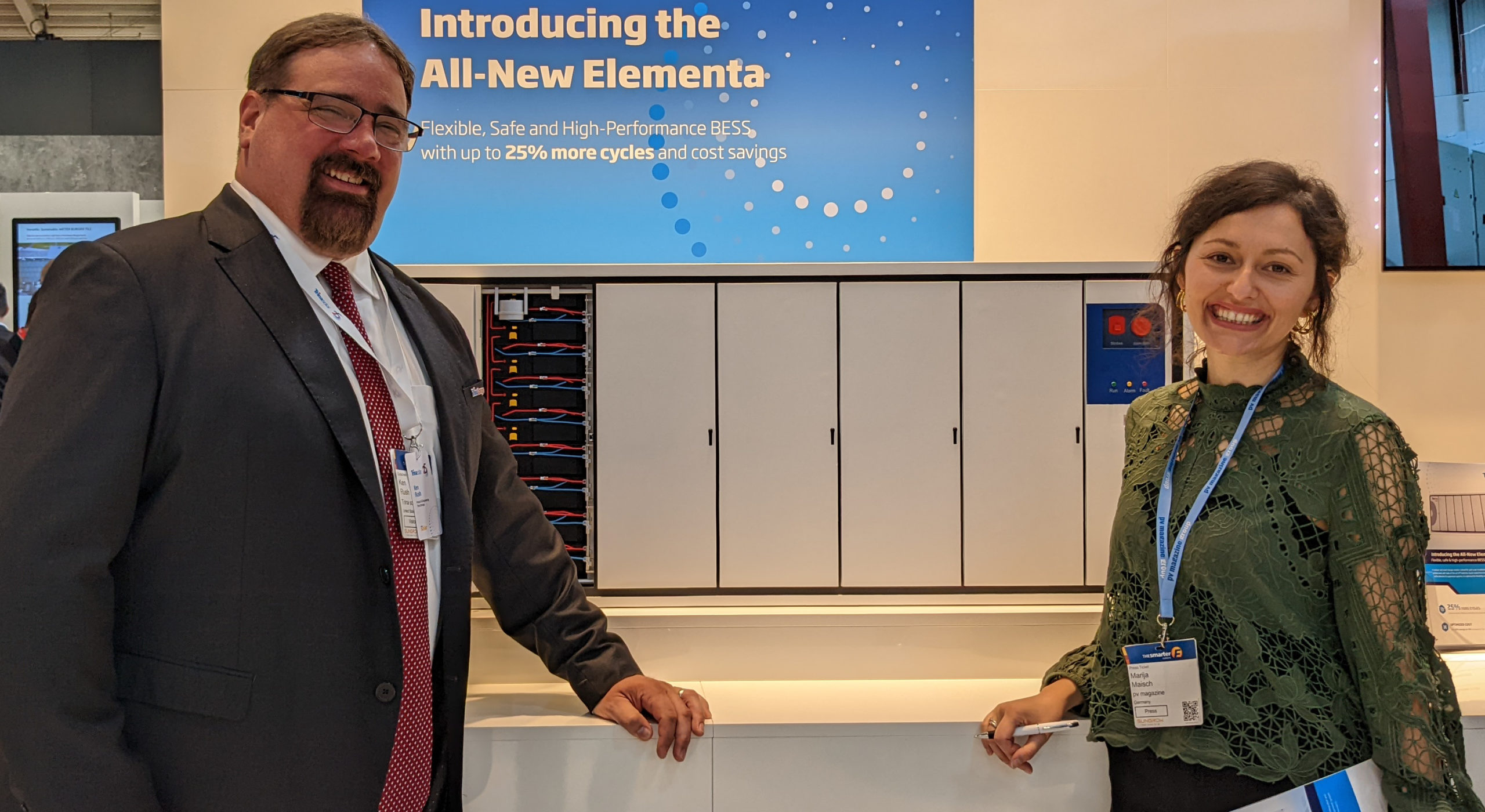
Trina Storage sold out for 2022
Trina Storage is showcasing its 2.1 MWh DC All-New Elementa, with 25% increased battery cycling, its first storage product integrating proprietary battery cells, writes Marija Maisch.
“We control the supply chain ourselves,” said Ken Rush, head of product and engineering.
Demand for battery storage is ramping up and Trina Storage knows that well. The business is sold out for the year and continues to scale-up production as we speak. Current order waiting times are around six to seven months and, as Rush confirmed for pv magazine, a “large portion” of Trina's 3 GWh lithium ferrophosphate (LFP) capacity is in production and will be scaled up in the near future.
The Trina Storage rep added, “high-level pricing” stands at around $250/kWh, with project-dependent factors affecting final price tag. The All-New Elementa may be massive in size but it can fit into a shipping container.

"Don't talk to me about shipping problems..."
With the whole industry (and many others) roiled by logistics, component, freight, and shipping headaches, spare a thought for Chinese solar manufacturer Eging PV.
The company hadn't quite managed to put its booth together by lunchtime today, with a representative blaming problems with logistics affecting the arrival of booth components.
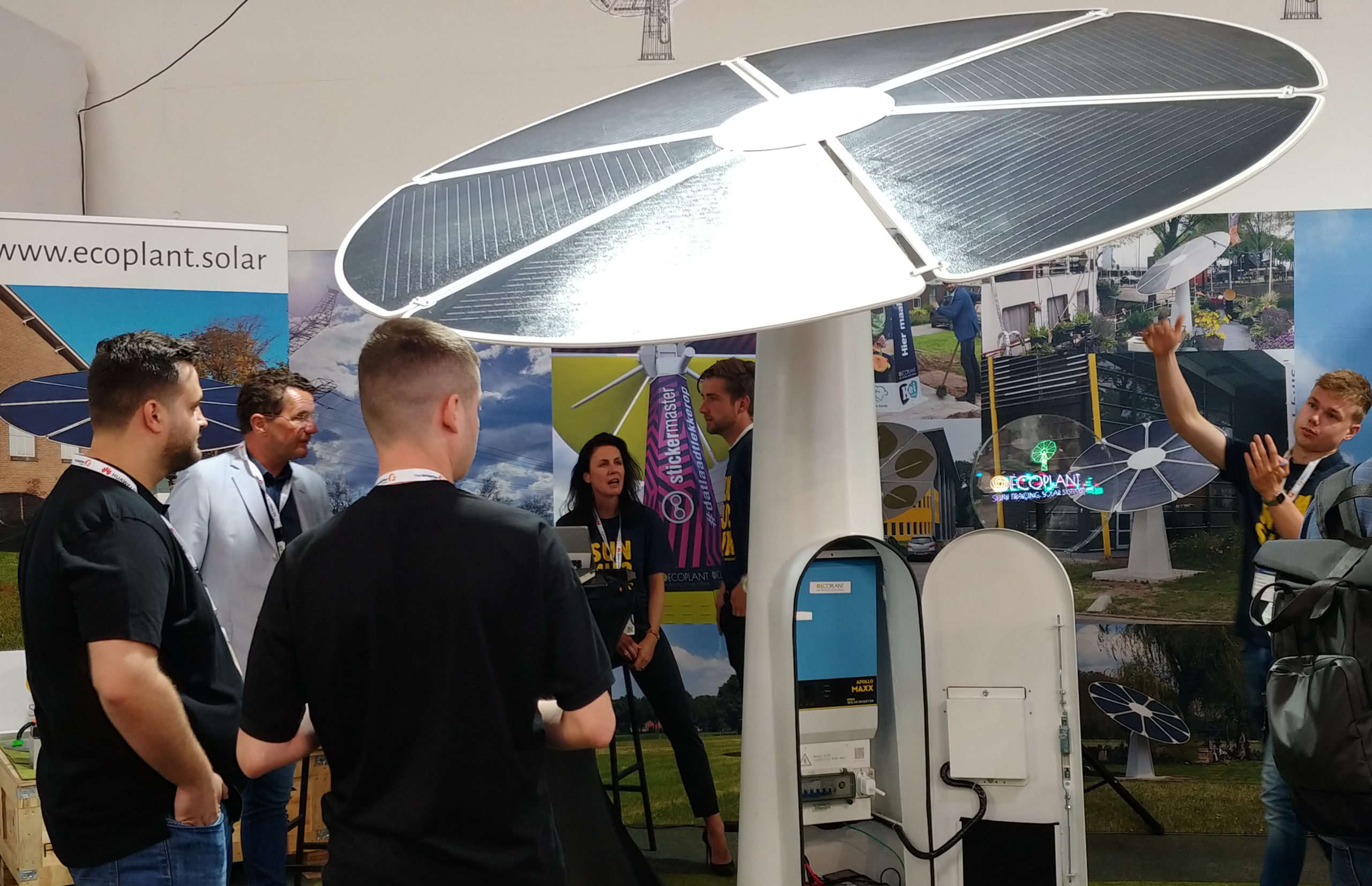
Is that a solar triffid?
Deep in hall A6, our intrepid Mark Hutchins has been confronted with a series of odd tree-like structures, and felt compelled to find out more.
Bart Veeneman, who works in sales support for Netherlands-based Ecoplant, was quick to explain that the larger of the two structures packs more than 2 kilowatts of solar capacity onto its circular top, which tracks the sun from. Each structure can also be integrated with an inverter and energy storage.
The company has been installing the devices at commercial and residential projects in the Netherlands for a few years already, and at the exhibition this year, Ecoplant is on the hunt for distribution partners to bring its tech further afield.
Doing it by the numbers
Here's some show numbers from Sandra Enkhardt, the heart and soul of our German website:
Across 12 exhibition halls and 132,000 m2, some 1,356 exhibitors will show their innovative PV and storage products, services, and business models for a new energy world. More than 50,000 visitors are expected at the three-day show.
SolarPower Europe launches Global Market Outlook
After the launch of SolarPower Europe’s Global Market Outlook yesterday, pv magazine sat down with Rafaelle Rossi, the trade body's head of market intelligence; and Christophe Lits, one of SPE's market analysts.
Last year, 167.8 GW of grid-connected solar capacity was added worldwide for 21% growth over the 139.2 GW added in 2020. SPE anticipates solar capacity will this year increase by 36%, to 228.5 GW, an only slightly less optimistic figure than IHS Markit’s 232 GW and BloombergNEF’s 245 GW. Price hikes and project delays explain SPE’s caution in its short-term prediction but the association’s expectations are higher than the other analysts’ for the medium term, Rossi pointed out.
When asked whether solar can sustain exponential growth in the long term – 10 to 15 years – Rossi and Lits expressed optimism. “New applications will counterbalance the high penetration of solar”, said the former. Lits highlighted the potential of building and vehicle-integrated PV, floating solar, and green hydrogen as promising applications.
The global outlook report pays special attention to Latin America, “a region that often passes under the radar” but whose solar market has grown more than 40 times since 2015. Brazil takes central stage in the region, having installed more than 15 GW of solar by April, a figure achieved under a government that is not particularly favorable to the technology. If the opposition takes over in the next election, matters can only get better, added Lits.
The Rolls Royce of microgrids ... no, really, it literally is
“I did not come by company car,” Tobias Badelt, from the battery storage systems department of Rolls Royce Solutions, assured attendees at an Intersolar event. “I came by train from Berlin where I ride an electric bike.”
Rolls Royce now owns Berlin-based electricity storage specialist Qinous and has installed more than 100 microgrids across five continents, writes Blake Matich.
“Rolls Royce knows that it needs to change,” said Badelt, who talked the conference through the merits of a containerized Samsung LFP battery energy storage solution with capacities ranging from 100 kWh up to 2.2 MWh sealed inside 40 ft containers which arrive from Germany ready to work.
“The first system was installed in 2014-15 in Haiti … and all our solutions are still working, and our experience is that when our systems work, they work for at least 25 years,” said the Rolls Royce rep.
Such long-term confidence has, of course, always been the basis of the luxury carmaker’s reputation.

Mounting systems as first responders
Meeting a rapid increase in demand isn’t impossible for PV mounting system manufacturers in Europe, even as the rest of the industry has struggled to ramp up.
At an Intersolar conference session dedicated to EU balance-of-system manufacturing, mounting systems maker Esdec Solar Group said early 2022 demand had doubled compared to the same period of last year.
Marc Dalderup, director of business development and market intelligence at Esdec, told the assembled crowd the first 18 weeks of 2022 had seen orders increase twofold, year on year.
Speaking with pv magazine after the panel event, Dalderup confirmed that this was around 20% above early 2020 demand, during those halcyon pre-pandemic days.
Dalderup said mounting systems were the first to respond to demand and are able to more easily meet the needs of a market being driven by the energy crisis and push for replacement sources of energy. The Dutch manufacturer confirmed the supply of inverters has been a pain point. Unusually, some rooftop solar projects have been going ahead and installing modules on rooftops even without an inverter, as project lead times increase.
Folks will pay a premium for nice looking BIPV
Could the long fight between engineers and architects soon settle into a compromise?
In yesterday’s catchily-titled conference session BIPV: Beautiful, multi-functional, and compelling – The long-awaited rise of solar as building material is in sight (Phew! Pauses for breath), panelists discussed the long disparity between engineers who want PV everywhere and architects who don’t like constraints to their originality, such as those exemplified by materials of limited color and shape.
The technical progress of digital ceramic printing, interferential coatings (your guess is as good as our man Blake's), and colored foils, mean building-integrated PV solutions are now variable enough to meet a wide variety of aesthetics while generating solar energy.
Of course, it is not until these solutions are more widely adopted by architects – and standardized by engineers – that the age of BIPV will truly arrive.
Thankfully, as vice president of Swiss research center CSEM and director of the Sustainable Energy Center Switzerland, Christophe Ballif explained: “People are ready to pay more for something that is nice and something that is made locally. And more means something like 20%-30%.”

Former SolarWorld CFO steps in to steer growth at Tesvolt
Fast growing battery system provider Tesvolt has tapped decades of solar industry experience to guide its next stage of expansion. Philipp Koecke joined Tesvolt as chief financial officer just weeks ago and stepped out at The Smarter E show to set out the company’s growth strategy.
Managing working capital is one of Koecke’s first priorities with suppliers right across the solar supply chain having to manage inventories in light of shortages of key components. As a result of Tesvolt’s healthy inventory levels, the company is able to ship its new E Series battery system – which includes the TS-I HV at 80 kWh of capacity and TS-1 HV1000, with 90 kWh, in 2-3 months – setting itself apart from rivals, the business claims.
The E Series has been designed to use 80% fewer chips, in response to global shortages.
Koecke joined Tesvolt so recently he doesn’t even have business cards in Munich. However, having served as CFO of controversial German module maker SolarWorld for more than 15 years, his reputation proceeds him.
#Protip: Tesvolt veteran Mathias Zdzieblowski says you can swing by the booth for “bier after vier.”
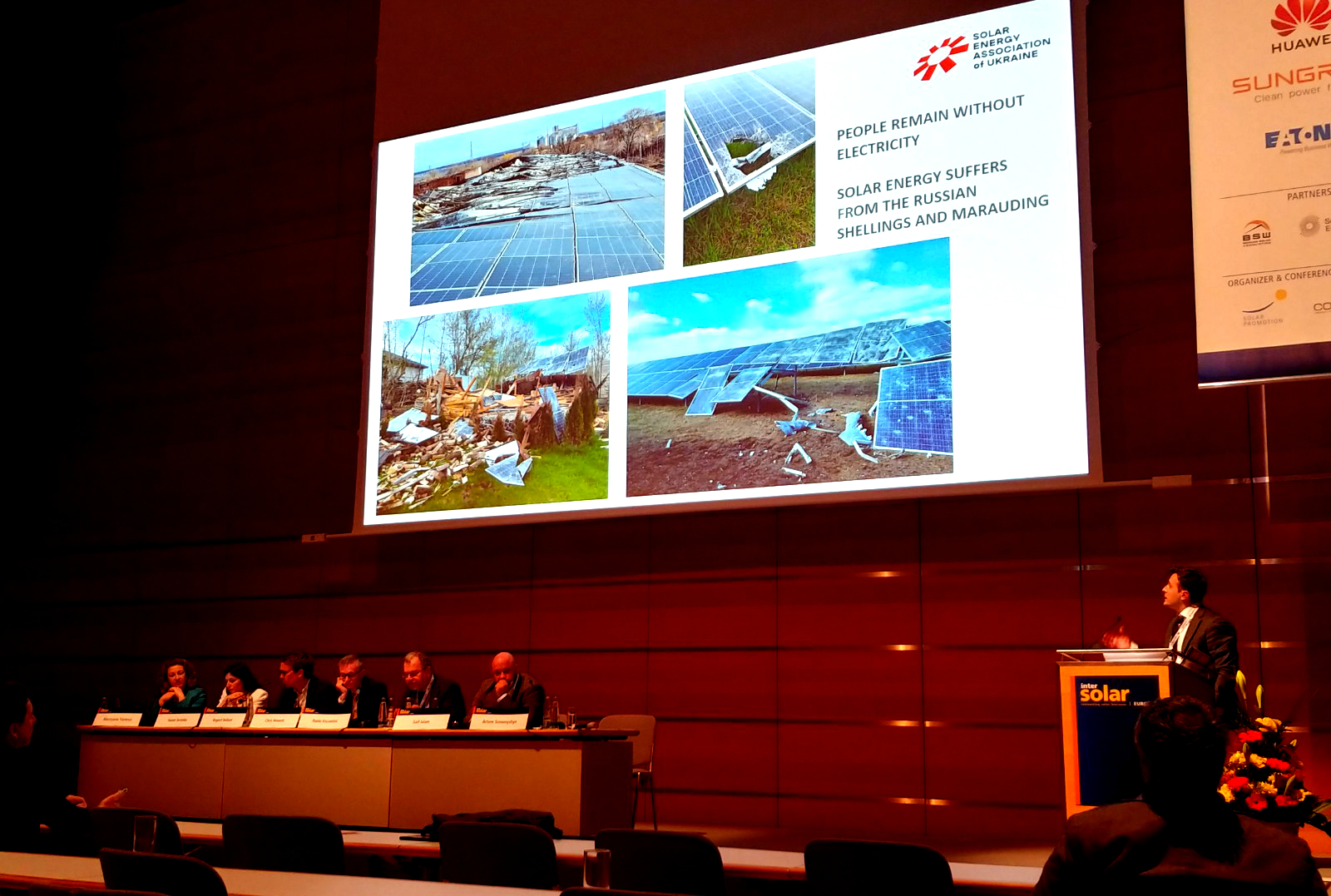
'A war against renewables'
Ahead of the exhibition that is getting under way as we speak, the Intersolar conference yesterday afternoon brought stark warnings of the task that confronts Europe’s solar industry following Russia's invasion of Ukraine, writes Mark Hutchins.
“This is also a war against renewable energy,” Artem Semenyshyn, of the Solar Energy Association of Ukraine, told the audience.
The session painted encouraging pictures for solar growth in Europe, taking in rising demand in regions from the Nordic nations to Italy and Portugal, and European markets can expect to ramp up significantly given the continent’s urgent desire to cut its dependence on Russian gas imports.
Semenyshyn closed yesterday's presentation by saying: “This new energy reality is real driver for PV.”

Qcells unveils new brand identity
A new Qcells has arrived! In April, the company announced its new brand identity, including a new logo, new mission, new values, and new slogan.
QCells has long been renowned as a leading solar cell and module supplier and, more recently, as a provider of smart storage solutions, 100% renewable electricity supply contracts, and a developer of large scale renewable energy projects. So the time was right for it to reconsider its core competencies and how they were reflected in its brand image.
The result is a striking new logo and a unifying slogan: Completely Clean Energy. Qcells aims for a greener tomorrow with completely clean energy solutions. To achieve this goal, it will be a trailblazer in its bold actions and ideas; offer stewardship through greater compassion and purpose; and be a paragon of good and excellence – driving the world towards a cleaner future via Qcells’ technical expertise and unshakeable belief in finding a better way.
Find out more at the Qcells booth in Hall A1 (A1.180 and A1.270).
Welcome from Longi
In recent years, Longi has turned its attention to green hydrogen. Li Zhenguo, company founder and CEO, recently spoke to pv magazine about its strategic shift and how he believes that coupling this technology with solar PV will be the key to achieving carbon neutrality.
You can read the interview here, visit the company at booth A2. 270, and watch Li Zhenguo’s welcome to this year’s Intersolar here:

Overcoming the EU’s 'chronic underestimation' of solar
To get the show on the road with the pv magazine beat patrol, our own Beatriz Santos asked SolarPower Europe's Dries Acke how the industry can avoid forever having its potential underestimated.
Getting a head start on his new mission to advocate for an expanded role for PV in Europe’s energy transition, SolarPower Europe’s new policy director, Dries Acke, attended The Smarter E conference in Munich yesterday. That, in itself demonstrated commitment to the cause as Acke will not officially begin his new position until next week.
Describing the EU as “at a fork in the road” in terms of energy policy, Acke said he hopes to help European policy makers recognize solar’s full potential – and turn around previous misconceptions that have seen it underestimated in the bloc’s strategy. Based on the bloc's current estimates for solar, the EU is “at risk of predicting less than business as usual,” according to Acke. The Brussels-based lobbyist said Russia’s invasion of Ukraine has EU member states considering whether they should be focused on securing fossil fuel alternatives to Russia or accelerating the energy transition – an option which would see solar emerge as a true “hero.”
With the European Commission scheduled to deliver its long-awaited solar energy strategy next week, Acke already has a packed in-tray. SolarPower Europe is ready for swift action if the commission’s announcement does not meet expectations.
Before joining SolarPower Europe, Acke was director for the energy systems initiative at the European Climate Foundation.
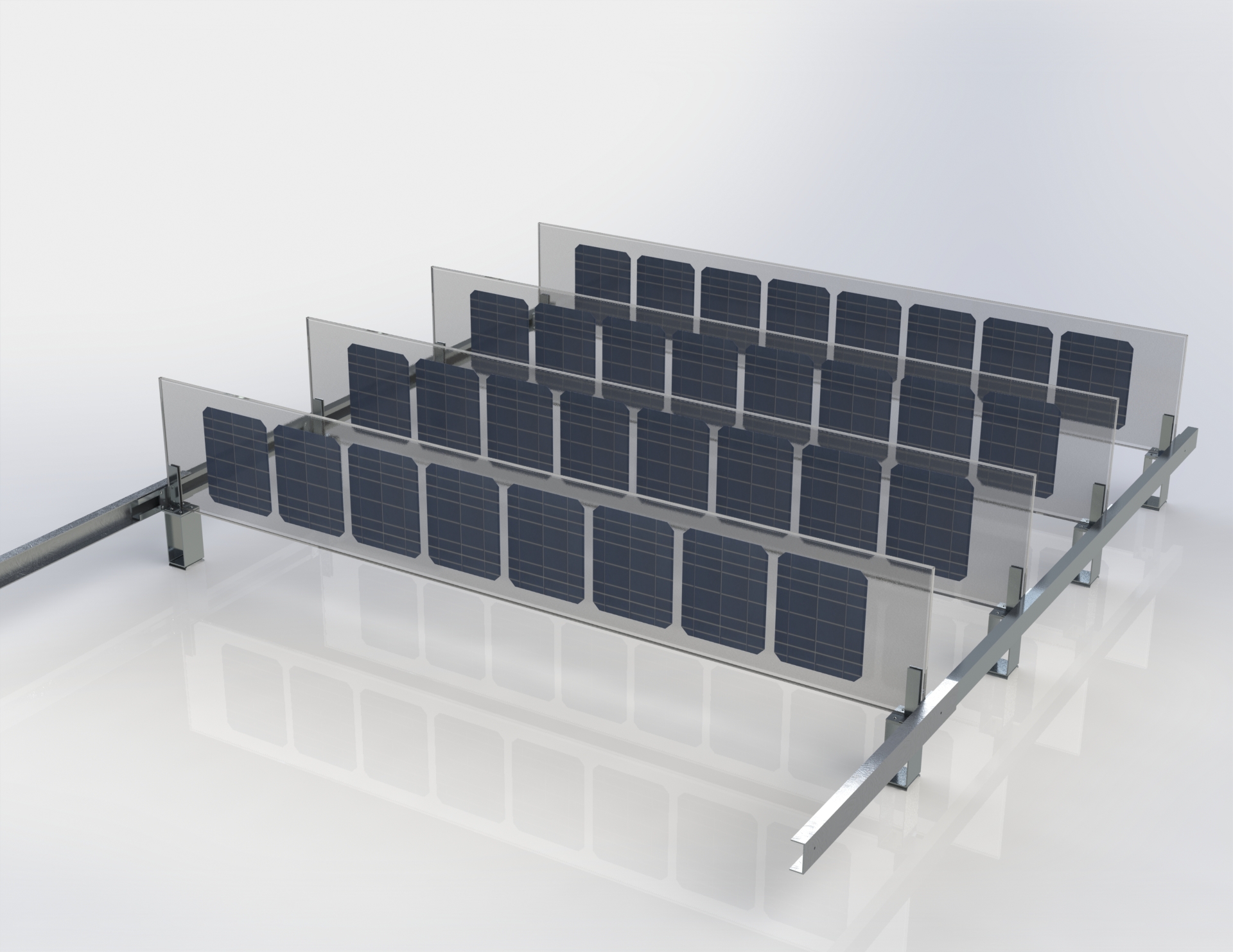
Welcome back!
The pv magazine team is delighted to be back at this year's Intersolar. We will be on the ground for the next three days, reporting on all the latest solar PV and energy storage developments as they happen.
We will also be posting all the new products we discover. If you have something to share with the team, email liveblog@pv-magazine.com with the details and we'll endeavor to stop by!
Already this week, we have featured a number of new products on the website, including:
- A C&I battery from BYD
- A new solar module cleaning solution from Ecoppia
- AEG's launch of a shingled solar module with 21.1% efficiency
- Winaico's launch of a 410 W solar panel with 20.93% efficiency
- Katek revealing a PV inverter for residential applications
- A high-voltage residential battery from Varta
- A vertical PV system for green rooftops
- And Hanwha QCells showcasing a 400 W n-type solar module with 22.3% efficiency
Stay tuned for more updates throughout the day!

